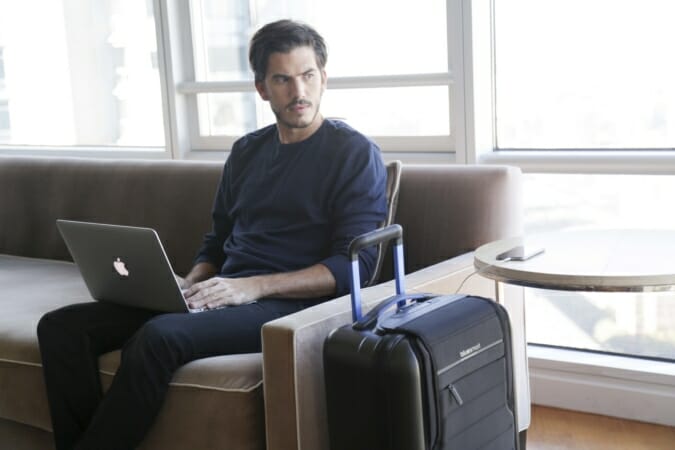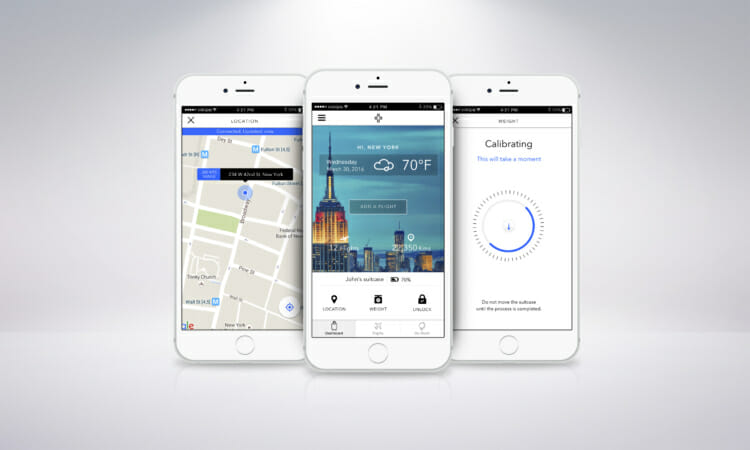How the Travel Industry is Using Wearable Technology
We've touched on the potential of various types of technology in the travel industry before. Whether it's virtual reality or instant messaging, the current wave of innovation could transform the travel industry for the better. But today we're going to get a little more specific. Today we're going to take a closer look at how wearable technology could impact travel, from both a customer and an operator's perspective.
What is wearable technology?
The clue is in the name with wearables: The term covers any technology that you wear, whether that's a heart-rate monitor around your wrist, a self-heating jacket or a rucksack with a built-in Wi-Fi hotspot.
As more and more devices become connected and technology continues the trend of growing smaller, ambitious manufacturers are able to incorporate advanced capabilities into everyday items. So how can travellers and travel industry operators benefit from the rise of wearable technology?
Selling more products
The first is something that will appeal to every travel operator: the chance to sell more products and generate extra revenue.
So how can more money be made with the help of wearable technology?
For starters, there's virtual reality - which is something we've written about extensively in the past.
Many travel agents are now using virtual reality technology to give potential customers an immersive view of a destination, accommodation or excursion. Check out the video below which, although more of a marketing exercise from Lufthansa, is a good example of the kind of tactics travel operators might employ in the coming years.
When deployed in this way, virtual reality gear can give prospective travellers a vivid idea of what a seat on a plane, room in a hotel or even walk down a nature trail would be like. This can be the tipping point that pushes them towards making a purchase or booking.
On top of the direct benefits VR can have on influencing customer decisions, the fact that operators are even using the technology serves as a marketing stunt in itself. As a concept that's on the edge of innovation at the moment, people tend to sit up and take notice whenever virtual reality is involved. That includes the press, as well as the general public.
There's one final advantage to virtual reality advertising: it's inherently personalised. Because all virtual reality experiences include an element of self-determination - you can choose where to look, and to an extent where to go and what actions to take - it's the ultimate in direct marketing.
Eventually, VR experiences will be tailored to the individual, giving every traveller a specific insight into what they're interested in seeing and doing abroad.
This combination of benefits makes diving into the world of Virtual Reality a no-brainer for travel operators. As the technology becomes more refined, it will quickly become clear that VR is the marketing tool of the future. Nothing can match it for giving someone a sense of what a trip, hotel or experience would be like. While it's also a great way to gain publicity for new offerings.
Improving the traveller experience
Sure, virtual reality gear can help sell holidays and boost the marketing of travel brands. But how can wearables impact travellers once a trip has started?
Easy boarding
You've probably seen the slow emergence of smartwatches in recent years, in particular the Apple Watch. But did you know that both easyJet and British Airways are among the airlines to have created apps for the Apple Watch? These enable passengers to store boarding passes and receive real-time updates - directly on their wrist.
And smart watches can go beyond just storing boarding passes. A new wrist gadget from timepiece experts Mont Blanc does a whole lot more. Thanks to several hands-free functions, boarding pass barcodes can be scanned directly from the screen; exploring a new town can be done with turn-by-turn navigation, and a collaboration with Uber offers quick access to cars. Users can also take advantage of a preloaded Foursquare City Guide app, which helps travellers find the best restaurants and experiences in any city and locates you immediately. Impressive.
Perhaps even more impressive is that the latest smart watches are essentially just a shrunken smartphone. They can do more than you might think. The Mont Blanc Summit watch includes a voice-activated translator, which can tell its user things like how to order coffee in Italian or how to buy train tickets in Japan. It also provides direct translations from several languages direct to the watch's display.
So that's more good news: There's no longer an excuse to be lost for words in the local tongue.
Smarter cruises
There are other wearables out there dedicated to improving the customer experience. For example at CES 2017 in January, cruise company Carnival launched a smart wearable for its customers. Dubbed 'Ocean Medallion', the device will do a number of things, from opening cabin doors for guests to facilitating transactions for drinks, food and merchandise.
Carnival suggested that the Ocean Medallion will also be connected to an app. Through the app cruise-goers can personalise their vacation and travel preferences. And just like other wearable makers, Carnival will have accessories for sale to allow its guests to customise their Medallion, allowing you to wear it on your wrist or around your neck. Is this fashion meets travel technology?
On the subject of wearables entering the cruise sphere, Adam Coulter, UK managing editor of CruiseCritic, said:
“The use of wearable technology solutions within the cruise industry is growing, and this marks a significant development in supporting personalisation at sea. Though the smaller cruise ships have been renowned for offering a tailored, and personalised experience to guests, it’s generally been a little more challenging for larger ships to offer this level of personalisation. However, wearable technology solutions, which enable cruise lines to obtain data about their passengers’ personal preferences, such as dietary restrictions, and restaurant preferences, mean that cruise lines should be able to deliver a holiday to suit individual travel styles.”
Wearable tech could bring new safety and security to travel
It's not just in terms of the customer experience that wearables are changing things in the world of travel. Small devices can also make a big impact in terms of safety and security. Check this out:
At CES 2016, skincare giant L'Oreal launched a revolutionary new wearable, My UV Patch, a stretchable skin sensor designed to monitor UV exposure and educate users about sun protection. It's being marketed as the modern traveller's best friend. Although clearly you don't have to be on holiday to benefit from this kind of wearable.
“Connected technologies have the potential to completely disrupt how we monitor the skin’s exposure to various external factors, including UV,” said Guive Balooch, Global Vice President of L’Oréal’s Technology Incubator.
“Previous technologies could only tell users the amount of potential sun exposure they were receiving per hour while wearing a rigid, non-stretchable device. The key was to design a sensor that was thin, comfortable and virtually weightless so people would actually want to wear it. We’re excited to be the first beauty company entering the stretchable electronics field and to explore the many potential applications for this technology within our industry and beyond.”

So that's one example of wearables improving traveller safety covered. What about security? Okay, so we'll be the first to admit this is not strictly a wearable, but it's certainly a step in taking luggage in a smarter direction. This is Bluesmart, an innovative UK luggage company developing smart suitcases for the world's tech-savvy travellers.
They've developed a suitcase packed with technology that solves many of the problems faced by travellers. Built-in GPS means you're never permanently separated from your bag; an electronic weighing scale tells you exactly how much more you can pack in; smart locks kick in when you're a certain distance away; the case has a USB socket to charge your other devices. And all of this can be interacted with via smartphone app. Wonderful.

These are just a few examples of how wearables are beginning to emerge on the travel industry scene. As well as helping operators market themselves, sell more bookings and products and keep travellers safer, they are improving the customer experience and generally making everything run more smoothly.
Here's to many more innovative wearable devices in the future of travel.